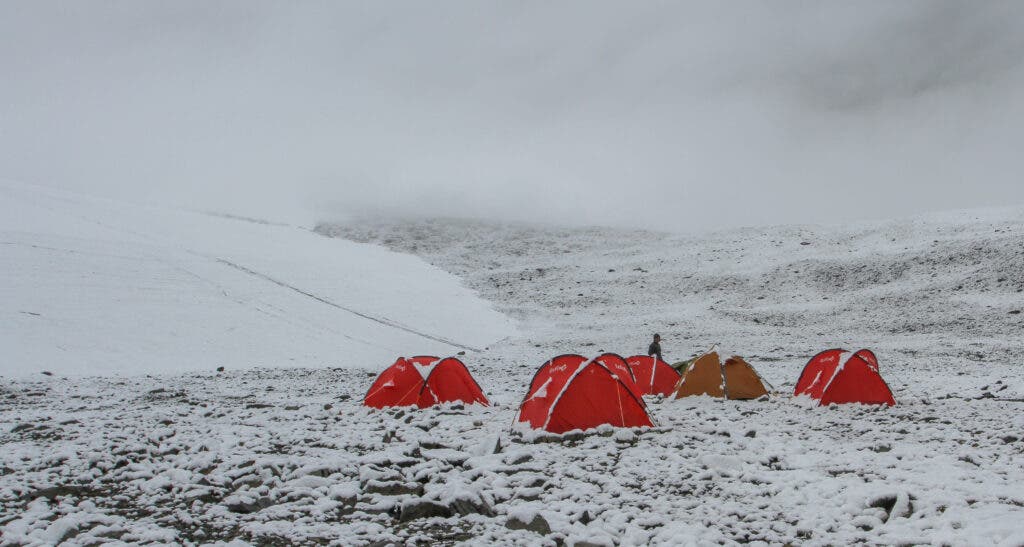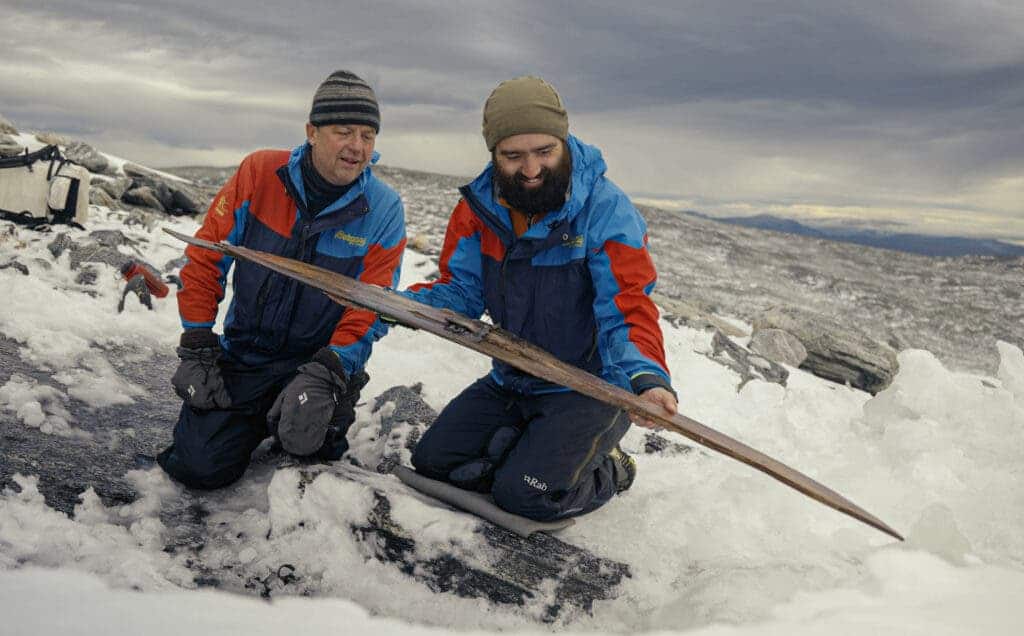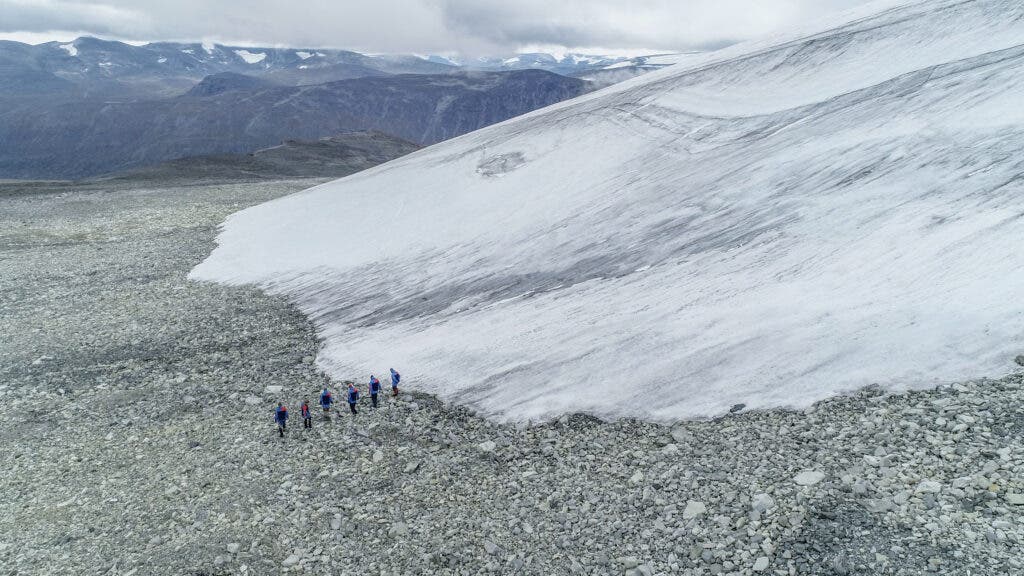
Archaeologists working in Norway uncovered an arrow in a survey in August, on newly exposed ground left behind by a retreating ice patch. The shaft is made of pine and the arrowhead is iron, the only thing missing is the typical fin-shaped arrangement of feathers.
The arrow was found near a reindeer hunting site and was “really well preserved” — other artifacts were also found, including another 9th-century arrow, but this one stood out because of how well it was conserved by the ice. The archaeological site dates to the 6th century AD, before the age of the Vikings, and was exposed by the retreating ice.

As climate change continues to kick in, it’s melting more and more ice, especially in places like Scandinavia. This is unveiling ancient objects that were previously unavailable.
“We have been doing glacial archaeology here in Innlandet County since 2006, which was when we had our first big melt. We have had a permanently funded program since 2011, which allows us to go out every year to survey our sites and look for new sites. Our fieldwork takes place in the high mountains in the northern part of the county – that is where all the ice is. Our work is concentrated on ice patches and other non-moving ice fields, as this is where the artifacts are best preserved. Moving glaciers destroy the artifacts,” says Lars Holger Pilø, an archaeologist who focuses on glacial findings and was involved in the project.
“It can be dated both by the shape of the arrowhead and the type of arrow shaft. This type of arrow is normally made in pine, while most other Iron Age arrows are made in birch. We have recovered more than 200 arrows from the ice in our county, and have found several examples of this type of arrow. In fact, there is one more such arrow from the same site that we recovered in 2019,” he adds in an email to ZME Science.
The arrow was found in an accumulation of loose stones and rocky debris at the base of a cliff. It likely originated higher up on the slope but fell down after it was freed from the ice.

It’s ironic that something as troubling as climate change is enabling archaeologists to make new discoveries, but especially in Norway, this is proving to be quite impactful.
“Glacial archaeology is a developing field, brought on by climate change. High mountain ice is melting, which has led to the exposure of artifacts in North America, Mongolia, the Alps, and Scandinavia. The highest number of finds and sites in the world are reported from Innlandet County, Norway,” reads a study on this type of work authored by Pilø.
However, it’s important to move fast: artifacts can be preserved by the cold and ice, but if they get exposed to the elements, they can be quickly damaged.
“The artifacts are preserved by the ice and the cold environment. Most of the artifacts have melted out of ice one or more times in the past, and this explains the differences in preservation. The longer the exposure, the poorer the preservation.”
“The massive melt-out of artifacts now is linked to anthropogenic climate change. The mountain ice is retreating rapidly and this releases the artifacts that were preserved by the ice for thousands of years. The rescue work for the ice artifacts takes place not only in Norway, but also in the Alps, North America, and in Mongolia. We need to increase our efforts so save this history of a melting world before the ice is gone and the finds are lost.”

Archaeologists conduct three types of surveys: exploration, systematic, and monitoring. They use drone monitoring and geophysical methods. Whenever artifacts are found, they are documented and packed into boxes, Pilø tells ZME Science.
They are then stored at the Norwegian Mountain Centre in Lom, until the field season is over. Some artifacts are refrozen at the mountain center. After the field season is over, the artifacts are taken to the Museum of Cultural History in Oslo, where they are curated.
The most exciting find so far, says Pilø, is a pair of skis that are a whopping 1,300 years old — but every campaign uncovers more and more exciting artifacts.
“We found the first ski in 2014 and waited seven years for the second ski to melt out! This is the best preserved ancient ski pair ever found with the binding still preserved. In 2019, We had a big melt and a number of very interesting finds melted out of our Lendbreen site, including a horse snowshoe from the 3rd century AD and a 16th century AD dog skeleton. We also found several extremely well-preserved arrows on the site, where the arrow you are asking about was found this year.”

Other findings include Lendbreen, a lost Viking mountain pass, and Langfonne, a site with 68 arrows lost in the snow during reindeer hunting.



